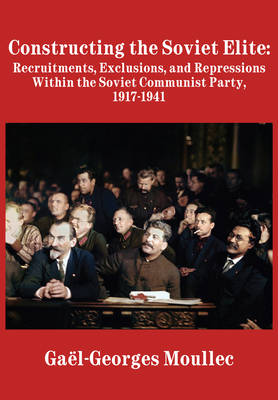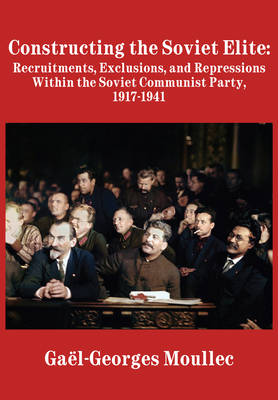
- Afhalen na 1 uur in een winkel met voorraad
- Gratis thuislevering in België vanaf € 30
- Ruim aanbod met 7 miljoen producten
- Afhalen na 1 uur in een winkel met voorraad
- Gratis thuislevering in België vanaf € 30
- Ruim aanbod met 7 miljoen producten
Constructing the Soviet Elite
Recruitments, Exclusions, and Repressions Within the Soviet Communist Party, 1917-1941
Gaël-Georges MoullecOmschrijving
The Soviet Communist Party faced a large-scale problem of regulating membership after the Russian Revolution of 1917. While recruitments were conducted mainly according to the internal Party rules, exclusion campaigns were periodically adopted to ensure ideological purity. In the decades before World War II, these reviews took various forms - from mere administrative re-registration to violent purges that involved hundred of thousands of arrests among Party members. The so-called "Great Purge" of 1937-1939 implicitly recognized the failure of the party's original policy of recruitment and promotion, and of the inability of the Party's political leadership to influence membership.
Although the "Great Purge" proved tragic, its implementation revealed great preparation and almost daily membership management. As surprising as it may seem, the statistics on membership movements (accessions, expulsions, etc.) were never as well kept as they were from 1937 to 1939. After the "Great Purge", a new and more intellectual membership rose to power. This generation presided over the destiny of the Soviet Union until Mikhail Gorbachev came to power in 1985. The innovative character of Gaël-Georges Moullec's study lies in the use of unpublished archival sources.
Specificaties
Betrokkenen
- Auteur(s):
- Uitgeverij:
Inhoud
- Aantal bladzijden:
- 318
- Taal:
- Engels
Eigenschappen
- Productcode (EAN):
- 9781680536942
- Verschijningsdatum:
- 25/10/2025
- Uitvoering:
- Hardcover
- Formaat:
- Genaaid
- Afmetingen:
- 152 mm x 229 mm
- Gewicht:
- 594 g

Alleen bij Standaard Boekhandel
Beoordelingen
We publiceren alleen reviews die voldoen aan de voorwaarden voor reviews. Bekijk onze voorwaarden voor reviews.








